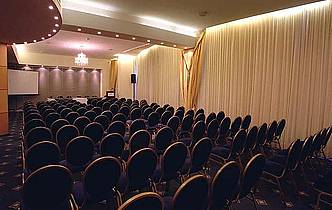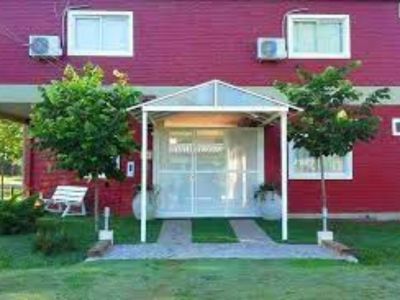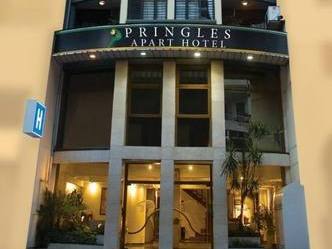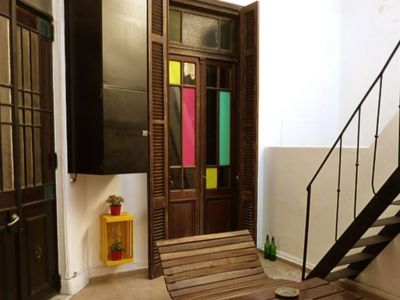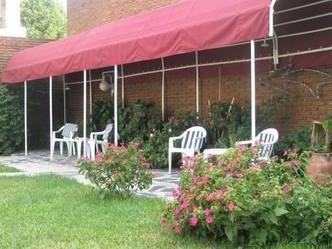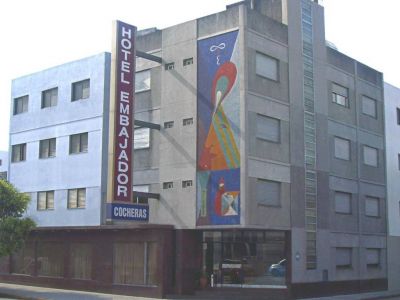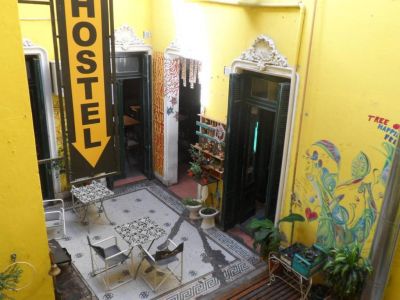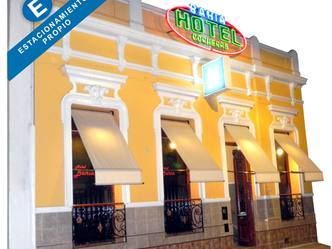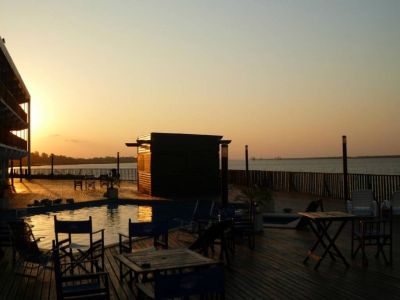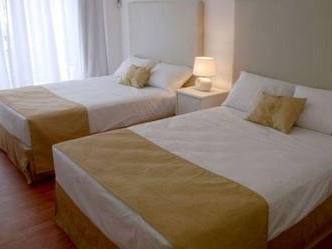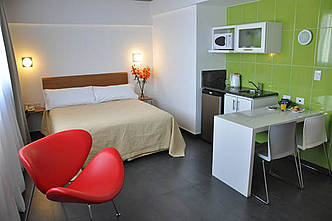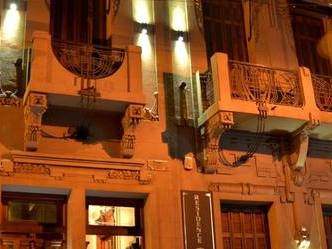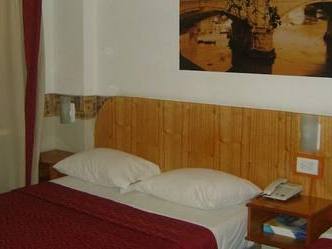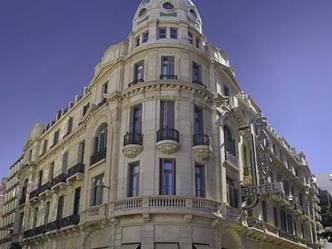A new day met us in Rosario. We had planned to visit the architectural heritage of the city that day. A guided walk would let us discover a great part of the history that made this metropolis famous from the point of view of aesthetics and culture.
The appointment was at ten in the morning. The meeting point was the corner of Córdoba Street and the Boulevard Oroño.
After a hearty American breakfast that we tasted at the hotel, we started to walk to our destination. As expected at that time of the year –June– Rosario was dressing up for the Flag’s Day. The houses and buildings brandished in light-blue and white from their windows and balconies. The street signs announced the agitated schedule the city would have that day.
We arrived. Gabriela Nant –from the tourist agency we had hired to make the excursion– was punctually waiting for us. After a warm hello and learning what we were about to do, we set off.
Tour of the Century
“Let’s go…” –Gabriela said, as she took Córdoba Street towards the city center. “This tour was created through a municipal regulation, with the purpose of giving value to one area of Rosario that contains paradigmatic buildings, put up during the first decades of the XIX century” – she added. The truth is that the area preserves the cultural heritage of the city, through the façades of the buildings from those days.
The tour is perfectly signaled and the largest buildings have explanatory plates that reveal the style, the year during which it was built, the architect in charge and the family who owns it or used to own it since 1800.
The first building that caught our attention was the old Palace of Justice and Court, which today is the Law College. Gabriela remarked that it has a strictly symmetric “U” shape, which is a clear example of the eclectic trend. It combines elements of various trends, paired columns, balustrades and allegorical sculptures.
Over the entrance, allegories of Justice made by sculptor Domingo Fontana finish off the decoration.
We continued walking, always along Córdoba Street, and we stopped opposite the Josefina Prats Foundation, where the National University of Rosario operates. We were surprised to learn that there is a fencing room in the basement, a symbol of the prestige from the time it was built. At present, cultural meetings are usually held.
We crossed towards the General San Martín Square and walked past the old police station. With a symmetric composition, it is curious to see that its columns are used as visual, rather than structural, resources. It has entrances on the four streets of the block. The Santa Fe Street entrance is the most important, where the colossal sculpture of a quadriga with horses finishes off the building. At present, the offices of the provincial government operate in the inside.
Farther on, we passed by the Pringles Square. This is one of the few green spaces within the central area of the city. Its ancient grove lodges countless office workers during their breaks from work. The high surrounding buildings seem to turn into walls that protect the place.
Opposite the Pringles Square, at 1500 Álvarez Passage, we find the Biblioteca Argentina library, with its large garden. The block of buildings occupies about 3,500 square meters. In the inside, there are exhibition rooms, a newspaper library and the offices of the United Nations.
We continued walking along Córdoba Street. We started to walk along the pedestrian area, which spreads from Paraguay Street to Laprida Street. Among the outstanding buildings, we can see the Minetti Palace, in art decó style, but with Egyptian style reminiscences. It has an important double brass gate, decorated with female figures.
In front of it, we can see the Molinos Félix building, with a symmetric façade. Its base outstands for being covered in black granite, for its steps and brass gate. It is a very beautiful work in the heart of Rosario.
At Córdoba and Corrientes, we stopped to watch the corner “of the three domes”. There we found three impressive buildings: the Stock Exchange, the General Insurance Company Real Estate Agency, and lastly, the former Palace Hotel facilities, which at present operate as offices.
The first one is the great protagonist. It presents an interesting cylindrical volume, with great steps. Its gate is framed by Corinthian columns of double height. It has sculptures allegorical of agriculture and cattle rising.
The second building –the Real Estate Agency – has countless construction details very unusual for the time when it was built, such as curved blacksmith work at the corner, the parket, the coats of arms and brackets in the façades.
The third one is the most austere and its openings, balconies and an upper railing in the corner stand out.
We walked along one more block and came across the Falabella store, former La Favorita store. This corner is the meeting point par excellence of the inhabitants of Rosario. The most characteristic about this building are its steps in Baroque style and the sculptures of the chamfer, which are allegorical of feminine coquetry.
At the end of the tour, we passed by the Jockey Club and the building known as the “snow ball”.
The Jockey Club is the head office of one of the most representative institutions of the Rosario’s bourgeoisie from the XX century. The building outstanding features include a façade with a main axis of symmetry, where a corner body articulates the two laterals with an apparently identical image. The Club’s coat of arms indicates the date of the construction.
About one hundred and fifty meters ahead, we find the “snow ball”. “It was the first private construction with several stories in Rosario. It was designed by a French architect who gave it a modernity character, including technological advances with classical outline”.
We finally concluded the Tour of the Century by enjoying the very beautiful Our Lady of the Rosary Cathedral Basilica, located opposite the 25 de Mayo main square. We entered the temple as the enormous vitraux in the entrance captivated our attention. It symbolizes the blessing of the Argentinian Flag, in February 27, 1812, by Father Julián Navarro in front of General Belgrano’s troops.
After going through the cathedral and visiting the chamber of the Virgin of the Rosary, we went out of the temple to say good-bye, as our tour was over. We were delighted to walk along the streets of Rosario and get to know great part of its history, its people and its life through its most important buildings.
Marcelo Sola
Marcelo Sola
Contact of the excursion or tour
Titania
Cortada Ricardone 46, Rosario, Santa Fe, Agentina
Phone: +54 341-4262640
















